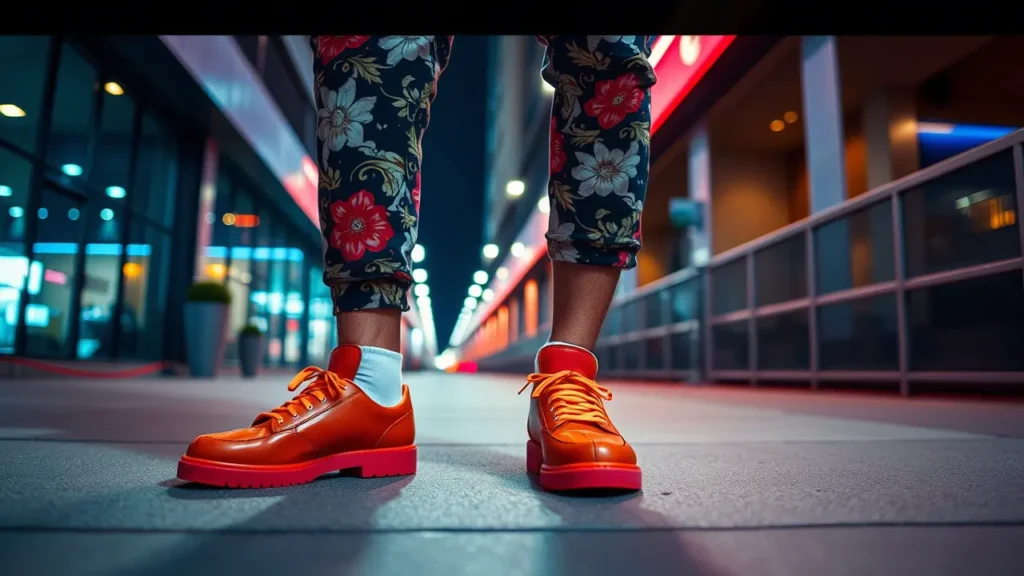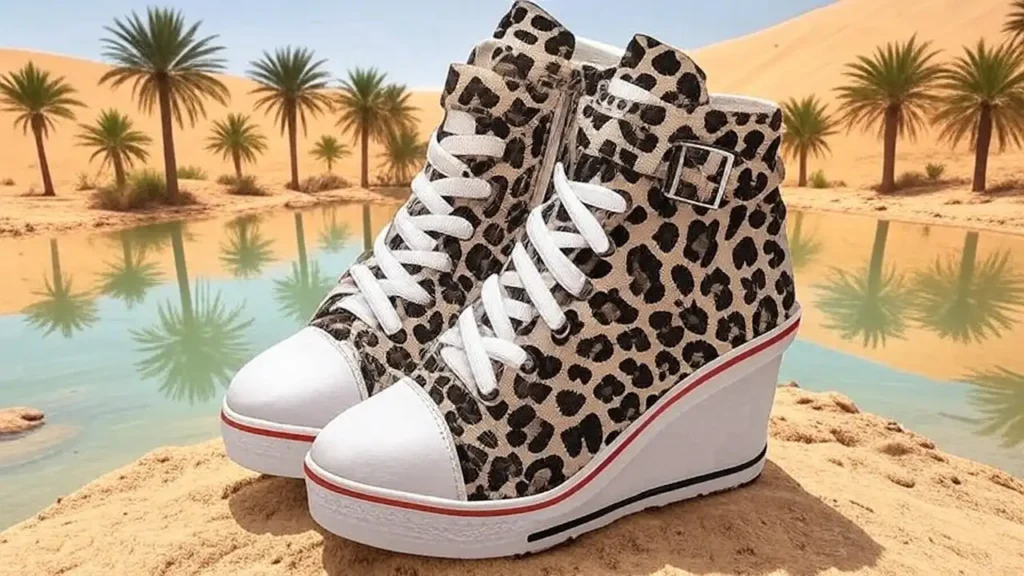Sneakers have undergone a remarkable transformation over the past century. It has evolved from humble athletic footwear into a global cultural phenomenon. It began the journey as practical shoes designed for sports performance. Now it has grown into a multi-billion-dollar industry that intersects fashion, art, and identity.
The journey of sneakers from gymnasiums to runways is not just about design innovation but also reflects broader shifts in society, technology, and consumer behavior. This article explores the evolution of sneaker culture, tracing its roots, key milestones, and its current status as a dominant force in both athletics and fashion.
The Origins: (Late 1800s – Early 1900s)
The story of sneakers begins with their invention as functional athletic wear. In the late 19th century, rubber-soled shoes were developed to provide better grip and comfort compared to leather-soled footwear.
These early “plimsolls” or canvas shoes became popular among athletes and casual users alike due to their lightweight construction and flexibility.
In 1917, Converse introduced the All-Star basketball shoe. It later became iconic under the name Chuck Taylor after the endorsement of basketball player Charles “Chuck” Taylor.
Around the same time, companies like Adidas and Puma emerged in Germany, focusing on creating specialized footwear for different sports.
The introduction of vulcanized rubber—a process that made soles more durable—was pivotal during this period. This allows sneakers to withstand rigorous physical activity while maintaining comfort.
At this stage, sneakers were purely utilitarian. They were catering primarily to athletes and active individuals.
However, they laid the foundation for what would eventually become a cultural movement.
The Rise of Branding and Iconic Designs (1950s – 1970s)
The period between the 1950s and 1970s marked a pivotal era in the evolution of sneakers. At this time, they transitioned from purely functional athletic gear to symbols of identity, and style.
This transformation was driven by advancements in technology, the rise of branding strategies, and the emergence of iconic designs. The design was conforming with both athletes and everyday consumers.
It was during this time that sneakers began to take on cultural significance, setting the stage for their eventual dominance in fashion and lifestyle.
Technological Advancements
One of the defining features of this era was the rapid advancement in sneaker technology. Brands recognized the need to innovate in order to cater to the growing demands of athletes for enhancing performance.
These innovations improved functionality and helped differentiate brands in an increasingly competitive market.
Adidas, founded by Adolf “Adi” Dassler, became synonymous with cutting-edge design. The brand’s commitment to innovation was evident in models like the Adidas Samba (1950). It was originally designed for soccer players training on icy surfaces. Its sleek design and versatility made it popular beyond the pitch.
Puma, founded by Adi’s brother Rudolf Dassler, focused on creating lightweight, high-performance sneakers. One of its most notable innovations was the introduction of screw-in studs for soccer cleats in the 1950s. This revolutionized the football footwear.
Puma also experimented with materials like suede, leading to the creation of the Puma Suede in 1968—a shoe that would later become a cornerstone of hip-hop culture.
While Converse had already established itself with the Chuck Taylor All-Star in 1917, the 1950s saw renewed interest in the model thanks to its association with basketball legends. The simplicity and reliability of the All-Star design made it a favorite among athletes and non-athletes alike.
These technological breakthroughs laid the groundwork for future innovations. These ensured that sneakers were no longer just about basic utility but also about delivering superior performance tailored to specific sports.
Branding Strategies: Building Emotional Connections
Another critical development during this period was the rise of branding strategies aimed at fostering emotional connections with consumers.
Companies realized that success depended not only on product quality but also on how effectively they could position themselves within the broader cultural landscape.
The use of celebrity endorsements became a game-changer in the sneaker industry. For example, the partnership between Adidas and Jesse Owens during the 1936 Berlin Olympics highlighted the power of aligning a brand with a globally recognized figure.
Similarly, Puma capitalized on its relationship with Brazilian soccer legend Pelé, whose dazzling performances on the field brought immense visibility to the brand.
In the post-war boom of the 1950s and 1960s, sneakers became associated with youth culture and countercultural movements. Movies like Rebel Without a Cause (1955) featured James Dean sporting white sneakers. This movie helped to reinforce their image as symbols of youthful rebellion and nonconformity.
This association with pop culture icons helped sneakers transcend their athletic origins and enter the realm of everyday fashion.
Logos played a crucial role in building brand recognition. Adidas’ three stripes, Puma’s leaping cat, and Converse’s star-and-circle emblem became instantly identifiable markers of quality and authenticity. These visual cues allowed consumers to form strong associations with specific brands.
The sense of visual conformity created loyalty and trust among the consumers.
Iconic Designs: Creating Timeless Silhouettes
Perhaps the most enduring legacy of this era is the creation of several iconic sneaker designs that remain relevant even today. These silhouettes combined innovative engineering with timeless aesthetics to make them appealing across generations.
Adidas Superstar (1969): Originally designed as a basketball shoe, the Adidas Superstar featured a rubber shell toe for added protection and durability. Its clean lines and minimalist design made it a hit both on and off the court.

Decades later, the Superstar gained renewed popularity through its adoption by hip-hop artists in the 1980s, particularly Run-D.M.C., who famously rapped about their love for the shoe in “My Adidas.”
This crossover appeal solidified the Superstar’s place as a cultural icon.
Nike Cortez (1972): Nike officially launched in 1971. One of its earliest successes came with the release of the Cortez in 1972.
Designed by co-founder Bill Bowerman, the Cortez was marketed as a running shoe with exceptional cushioning and support. Its streamlined silhouette and bold color combinations made it a favorite among joggers and casual wearers alike.
Over time, the Cortez became closely linked with West Coast hip-hop culture. It appeared prominently in films like Forrest Gump and Boyz n the Hood .
Onitsuka Tiger Mexico 66: Onitsuka Tiger, the precursor to ASICS, introduced the Mexico 66 in 1966. Known for its distinctive side stripes and retro aesthetic, the shoe gained widespread acclaim after being worn by Japanese athletes during the 1968 Mexico City Olympics.
Its blend of heritage and modernity has kept it relevant in contemporary sneaker culture.
The Golden Age of Sneaker Culture (1980s – 1990s)
The 1980s are often regarded as the golden age of sneaker culture. The revolution was driven by groundbreaking collaborations between brands and celebrities, along with advancements in technology and design.
Two events stand out as defining moments:
Michael Jordan and Air Jordans: When Nike signed Michael Jordan in 1984 and launched the Air Jordan line, it revolutionized the sneaker industry.
The Air Jordan I, banned by the NBA for violating uniform policies, only added to its mystique and desirability.
With its bold red-and-black colorway and cutting-edge cushioning technology, the Air Jordan transcended basketball courts to become a symbol of status and coolness. It remains one of the most influential sneaker lines in history.
Hip-Hop Influence: Hip-hop artists embraced sneakers as part of their streetwear aesthetic. They turned Adidas Superstar, Nike Air Force 1, and Reebok Classics into icons of urban culture.
Groups like Run-D.M.C. famously rapped about their love for Adidas in songs like “My Adidas,” further solidifying the connection between sneakers and music.
During this era, limited-edition releases and collaborations became increasingly common, fueling demand among collectors.
Brands realized that scarcity and exclusivity could drive hype, leading to the birth of sneakerhead culture—a community obsessed with acquiring rare and coveted pairs.
Mainstream Acceptance (2000s – Present)
As we entered the 21st century, sneakers transitioned from subculture to mainstream fashion. Designers like Marc Jacobs and Raf Simons began incorporating sneakers into high-fashion collections.
Luxury houses such as Gucci, Balenciaga, and Louis Vuitton followed suit, releasing their own interpretations of classic silhouettes at premium prices.
Collaborations between sneaker brands and designers/artists reached new heights. For example, Nike’s partnership with Off-White founder Virgil Abloh resulted in “The Ten” collection, reimagining ten iconic Nike models with deconstructed aesthetics.
Similarly, Adidas’ collaboration with Kanye West on the Yeezy line turned sneakers into must-have items for fashionistas worldwide.
Social media platforms like Instagram played a crucial role in amplifying sneaker culture. This platform enables enthusiasts to share photos of their collections and stay updated on upcoming releases.
Resale markets like StockX and GOAT capitalized on the growing demand for limited-edition sneakers, turning some pairs into lucrative investments.
Today, sneakers are no longer confined to specific demographics. They appeal to people of all ages, genders, and backgrounds.
Whether worn with tailored suits or athleisure outfits, sneakers have become versatile wardrobe essentials that bridge the gap between functionality and style.
Key Factors Driving Sneaker Culture Today
Several factors contribute to the enduring popularity of sneakers:
Technological Advancements: Modern sneakers incorporate advanced materials like Flyknit, Boost foam, and carbon fiber plates. These materials enhance performance without compromising aesthetics.
Customization: Brands now offer customization options. The consumers can now personalize their sneakers with unique colors and patterns.
Sustainability: As environmental concerns grow, many companies are exploring eco-friendly alternatives, such as recycled materials and biodegradable components.
Community and Identity: Sneaker culture fosters a sense of belonging, connecting people through shared passions for design, history, and storytelling.
Pop Culture Integration: From movies (Spider-Man: Into the Spider-Verse) to video games (Fortnite), sneakers continue to permeate various forms of entertainment, reinforcing their cultural relevance.
The evolution of sneaker culture is a testament to the power of innovation, branding, and community. What started as simple athletic footwear has transformed into a dynamic intersection of sport, art, and fashion.
Sneakers today represent more than just utility—they embody individuality, creativity, and self-expression.
As the industry continues to evolve, one thing is certain: sneakers will remain a cornerstone of global culture, adapting to changing trends while staying true to their roots.




